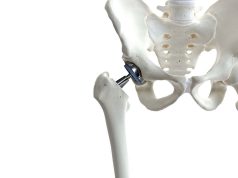Trend driven by link between surgeon volume, reoperations for inflatable penile prosthesis infection
TUESDAY, Dec. 20, 2016 (HealthDay News) — Surgeon volume is associated with the likelihood of reoperation after inflatable penile prosthesis surgery, with the trend driven by reoperations for infection, according to a study published in the January issue of The Journal of Urology.
Ifeanyi C. Onyeji, from the Columbia University Medical Center in New York City, and colleagues queried the New York Statewide Planning and Research Cooperative System database from 1995 to 2014 for inflatable penile prosthesis cases. They examined the impact of surgeon annual case volume on inflatable penile prosthesis reoperation rates among 14,969 men followed for a median of 95.1 months from the time of implant.
The researchers found that the rate of overall reoperation was 6.4 percent, and the rates of reoperation from infection and noninfectious complications were 2.5 and 3.9 percent, respectively. Reoperation for infection, but not for noninfectious complications, was more likely for implants placed by lower-volume implanters. Compared with patients treated by surgeons in the highest quartile of annual case volume (more than 31 cases per year), those treated by surgeons in the lowest, second, and third annual case volume quartiles (zero to two, three to seven, and eight to 31 cases per year, respectively) were significantly more likely to require reoperation for inflatable penile prosthesis infection (hazard ratios, 2.5, 2.4, and 2.1, respectively).
“Patients treated by higher-volume implanters are less likely to require reoperation after inflatable penile prosthesis insertion than those treated by lower-volume surgeons,” the authors write.
One author disclosed financial ties to Coloplast.
Full Text
Copyright © 2016 HealthDay. All rights reserved.








